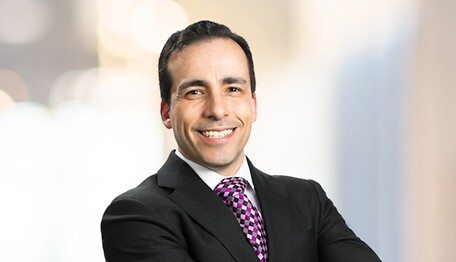New York's Highest Court Says Asbestos Causation Requires Evidence Of Sufficient Exposure To Sustain Liability
On April 26, 2022, the New York Court of Appeals described that in toxic tort cases a plaintiff can only establish liability-creating causation for an adverse health effect with “expert testimony based on generally accepted methodologies.” See Francis Nemeth v. Brenntag North America (N.Y. Apr. 26, 2022). The suit involved alleged asbestos exposure from talc.
The plaintiff alleged liability for talc contaminated with asbestos that was ultimately used in a commercial talcum powder, Desert Flower, which the decedent applied daily from 1960 to 1971. At trial, the plaintiff proffered two expert witnesses, a geologist, Sean Fitzgerald, who testified about the “glove box test” and a doctor of internal medicine, Dr. Jacqueline Moline. Fitzgerald’s glove box test consisted of agitating a sample of Desert Flower in a Plexiglas chamber. Fitzgerald concluded that the asbestos fibers in the sample of Desert Flower were “significantly releasable” and that the decedent was exposed to thousands to trillions of fibers through repeated use. Dr. Moline concluded Desert Flower was “a substantial contributing factor” to the decedent’s peritoneal mesothelioma. The jury returned a verdict in the plaintiff’s favor.
The Appellate Division then modified the judgment as to damages, but otherwise affirmed, finding that there was sufficient evidence to support the jury’s verdict and the conclusion that causation was established. Whittaker was granted leave to appeal to the New York Court of Appeals.
The Court of Appeals reiterated the following requirements for proving causation in toxic tort cases: “‘plaintiff’s exposure to a toxin, that the toxin is capable of causing the particular illness (general causation) and that plaintiff was exposed to sufficient levels of the toxin to cause the illness (specific causation).’” The Court of Appeals emphasized that, although precise quantification of exposure is not always required, a plaintiff has the burden of establishing sufficient exposure to a substance to cause the adverse health effect. Moreover, the expert testimony a plaintiff relies on must be based on “generally accepted methodologies.” Expert testimony is deemed insufficient when it merely concludes that exposure to a toxin is “excessive” or “far more” than others, when it “merely links a toxin to a disease,” or when it uses symptoms to infer backwards a toxin concentration used to demonstrate causation.
In reversing the trial court, the Court of Appeals found that the plaintiff failed to prove that exposure to asbestos in the product was a proximate cause of the decedent’s illness. The Court of Appeals determined that Dr. Moline’s testimony describing mesothelioma as a sentinel health event of asbestos exposure is no different than the conclusory assertions of causation that have been held as insufficient to meet the requirements of causation in previous toxic tort cases. Further, none of the studies or scientific literature relied upon by Dr. Moline provided an “estimate of the minimum level of exposure to respirable asbestos . . . that would suffice to cause peritoneal mesothelioma.” It is insufficient to merely rely on a comparison to the exposure levels of subjects of other studies. There needs to a “a specific comparison sufficient to show how the plaintiff’s exposure level related to those of the other subjects.”
As for Fitzgerald’s testimony, the Court of Appeals determined that Fitzgerald’s glove box test was neither a quantification nor a scientific expression of the decedent’s exposure. Fitzgerald failed to provide an estimate of the amount of asbestos that would be inhaled based on the test. Although a precise numerical value is not required, there still needs to be a scientific expression linking the decedent’s actual exposure to asbestos to a level known to cause mesothelioma. Due to flaws in the test, Dr. Moline’s reliance on the test in concluding that the decedent’s exposure caused her mesothelioma was also insufficient.
This ruling should help clarify that a plaintiff cannot successfully establish causation without showing, with the use of expert testimony, sufficient exposure to a toxin to cause the claimed illness. This case follows a line of toxic tort cases in which the Court of Appeals has excluded expert testimony because there was “too great an analytical gap between the data and the opinion proffered.” The standard for establishing causation is intended to strike a balance between the need to exclude unreliable information and the need to not make it impossible for toxic tort plaintiffs to bring their claims.
If you have questions or would like further information, please contact Rafael Vergara (vergarar@whiteandwilliams.com; 212.631.4416) or Jhonattan N. Gonzalez (gonzalezj@whiteandwilliams.com; 201.368.7223).
PRACTICE AREAS
Practice Areas
KEY ATTORNEYS
-
Partner

